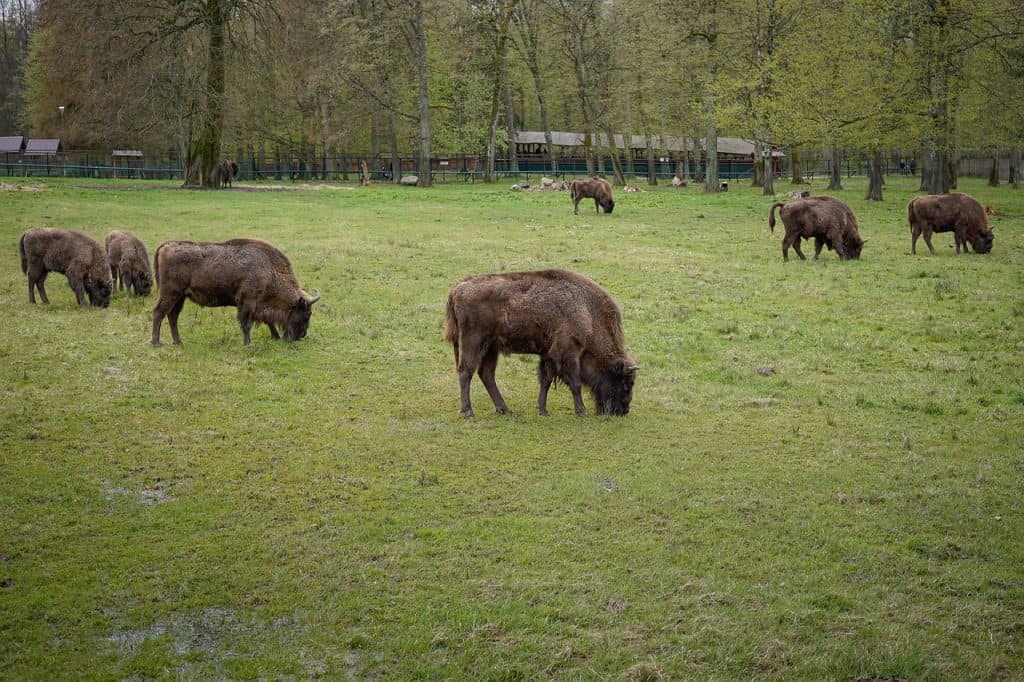Within the borders of Polesie National Park, 7 nature paths (6 walking, 1 cycling) are available, well equipped with tourist infrastructure (roofing, parking lots, bonfire places) and educational (information boards). They are led through the most characteristic and at the same time the most interesting ecosystems of the Park. Through marsh areas, paths lead along wooden footbridges, enabling comfortable and safe exploration of the most valuable parts of Polesie.

“Chahara” path
“Czahary” are wetlands covered with bushes. The population in the eastern lands of the First Polish-Lithuanian Commonwealth used this word as early as the 17th century. This name was given to the new PPN educational trail, built within the BagnaBubnów complex, which is an ideal place for wetland birds. It is also a great place for cranes. Their autumn concentration on Bubnów Swamp is among the largest in the region – the so-called shelters can gather over 3000 individuals. There is another very rare species here – Aquatic Warbler. This inconspicuous bird of the reed family is the rarest migratory songbird in Europe. Its population in the PPN is stable and it is estimated at about 400 singing males (the second largest population in the country). The path mainly shows peat bog ecosystems, and plant and animal species characteristic of the low carbonate bog. Here it will be possible to meet with elk, roe deer, and also deer during the rut. Waiting for visitors: lookout towers, roofing, viewing platforms, parking spaces. A significant part of the path runs over the footbridges, which will allow you to pass through the marshes with a dry foot, while protecting the sensitive nature of peat bogs. The path is accessible to people with disabilities. There are 5 stops on the 6.5 km route starting and ending behind the village of Zastawie. The path for the disabled is also available from Kulczyn and Wincencin. The path will be available free of charge for several years.
“Dominik Oak” path
Length 2.5 km (longer variant 3.5 km). Beginning in the village of Łomnica. Part of the footbridge is adapted for visiting by disabled people. The path leads through various types of forests (high and low oak-hornbeam, clump-alder alder, swamp forest) to the Moszne lake, which is in the last phase of overgrowth. A special element of the path is the transitional peat bog created on the so-called mold here. There are rare and interesting boreal plants, e.g. Lapland and bilberry willow, low birch, round-leaved sundew, common larch and common swamp. Part of the path from stop 1 to stop 7 is adapted for use by people with physical disabilities.
“Perehod” path
Length about 5 km. Beginning of the path in the village of Pieszowola, behind the manor park. The path leads through the so-called Pieszolowo ponds. Has ornithological character. It is the most interesting during bird flies, whose observation is facilitated by 2 towers and an observation shelter.
“Float” path
The length is about 7.5 km. Beginning in Załucza Stary. It presents valuable forest complexes: subboreal marsh birch and alder clump alder, as well as transitional peat bog and various types of meadows. Its special attraction are carnivorous plants and flowering orchids. The path ends with a bridge over Lake Łukie. Here you can learn about the zonation of vegetation as it happens in eutrophic lake. The last section of the footbridge and the viewing platform are adapted for visiting by people with physical disabilities.

Path “Insurgent Camp”
The natural and historical path “Insurgent Camp” begins in the town of Lipniak. Its length is about 4 km. The path presents various forest communities min. oak-hornbeam, alder-clump alder; leads a dike along the Zienkowske meadows complex (called “Trains”) to the magnificent beaver lodge. “Insurgents’ oak”, graves, or place of insurgent camp – constituting the historical elements of the path, give tourists a more complete idea of the course of the January Uprising in the Łęczyńsko-Włodawskie Lake District.

“Turtle” path
Length about 0.5 km. It is located in the Museum and Education Center PPN in Załuczu Stary. It is intended for the youngest guests of the Park. It presents, among others forest structure, life of the European pond turtle and presents a small Animal Rehabilitation Center created by the Park. On the path of the track there are also devices for education through play, among others a hill, playing dulcimer or a fortune.
“Nature trail” path
Length: 0.2 km. This mini-educational trail is designed for the smallest and oldest guests of the park, as well as for people who for various reasons can not go on longer routes. Organized groups that attend classes at the didactic and administrative center of the Polesie National Park may also participate. The trail is located in the didactic garden in the didactic and administrative center in Ursulin and is equipped with educational devices dedicated to certain types of animals and the natural attractions of the Poleski National Park. Here you can learn about elks and their habits, play hide and seek squirrels and weasels, and see in which houses the birds live.
“Mietiułka” bicycle path
Bicycle path, length 21 km. It comes from the village of Loviszów, along the route stands the marsh “Durne Bagno” with an observation tower. The trail forms a loop passing through the pond complex in Peszovol, and then leads along the Mietiułka River to the starting point.
Access to the nature paths is paid (tickets can be bought in the centers of Poleski National Park).
The article comes from the portal: http://www.turystyka-pojezierze.pl/


